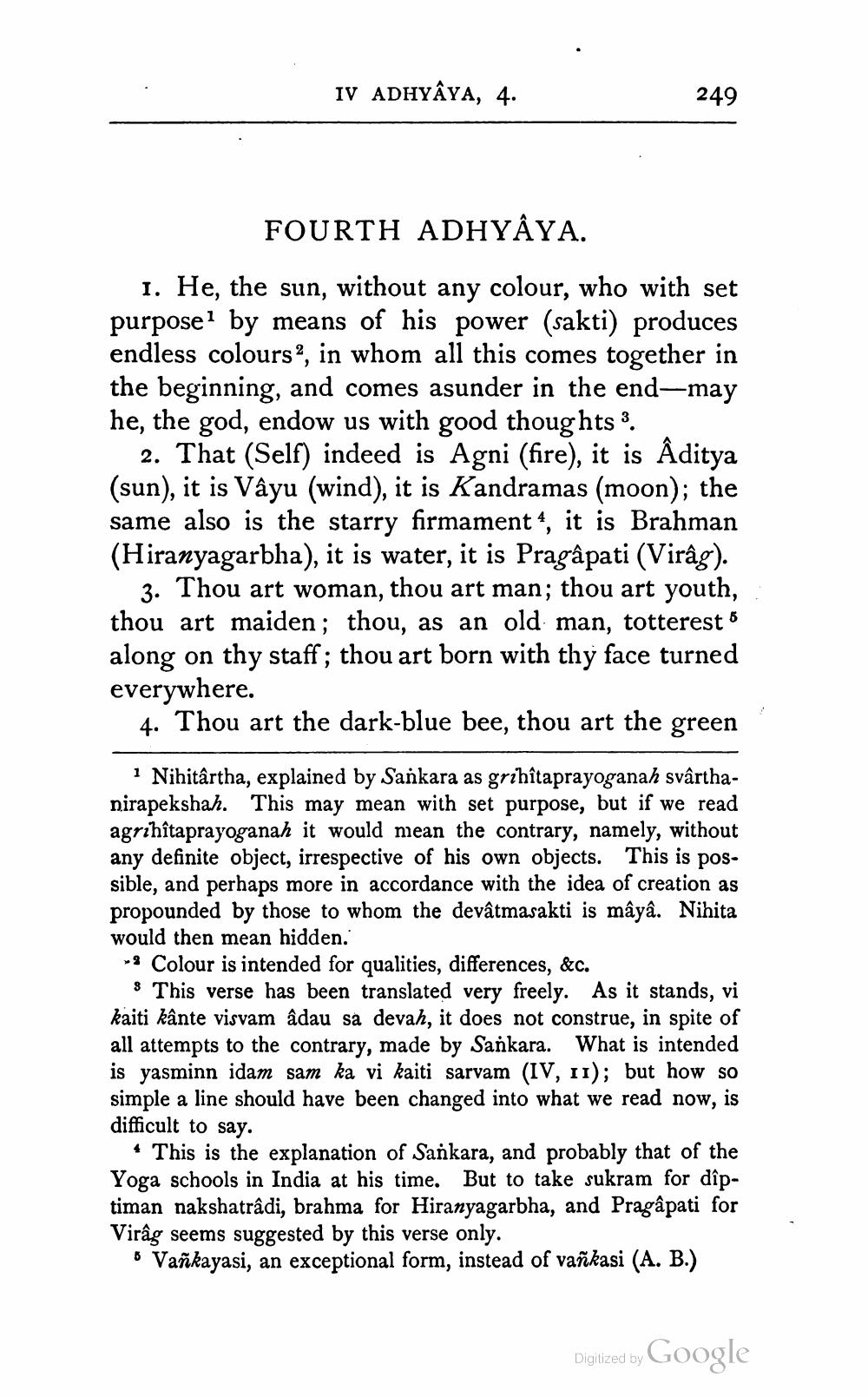________________
IV ADHYAYA, 4.
249
FOURTH ADHYAYA.
1. He, the sun, without any colour, who with set purpose1 by means of his power (sakti) produces endless colours, in whom all this comes together in the beginning, and comes asunder in the end-may he, the god, endow us with good thoughts 3.
2. That (Self) indeed is Agni (fire), it is Âditya (sun), it is Vâyu (wind), it is Kandramas (moon); the same also is the starry firmament, it is Brahman (Hiranyagarbha), it is water, it is Pragâpati (Virâg).
3. Thou art woman, thou art man; thou art youth, thou art maiden; thou, as an old man, totterest along on thy staff; thou art born with thy face turned everywhere.
4. Thou art the dark-blue bee, thou art the green
5
1 Nihitârtha, explained by Sankara as grihîtaprayoganah svârthanirapekshah. This may mean with set purpose, but if we read agrihîtaprayoganah it would mean the contrary, namely, without any definite object, irrespective of his own objects. This is possible, and perhaps more in accordance with the idea of creation as propounded by those to whom the devâtmasakti is mâyâ. Nihita would then mean hidden.
- Colour is intended for qualities, differences, &c.
This verse has been translated very freely. As it stands, vi kaiti kânte visvam âdau sa devah, it does not construe, in spite of all attempts to the contrary, made by Sankara. What is intended is yasminn idam sam ka vi kaiti sarvam (IV, 11); but how so simple a line should have been changed into what we read now, is difficult to say.
Digitized by
This is the explanation of Sankara, and probably that of the Yoga schools in India at his time. But to take sukram for dîptiman nakshatrâdi, brahma for Hiranyagarbha, and Pragâpati for Virâg seems suggested by this verse only.
5 Vankayasi, an exceptional form, instead of vañkasi (A. B.)
Google




